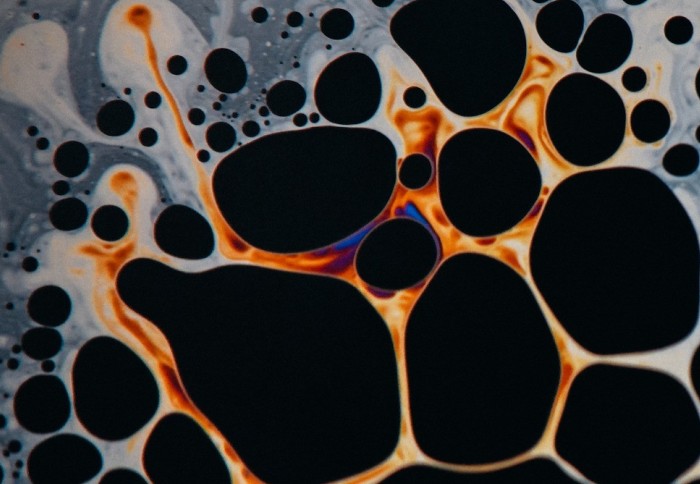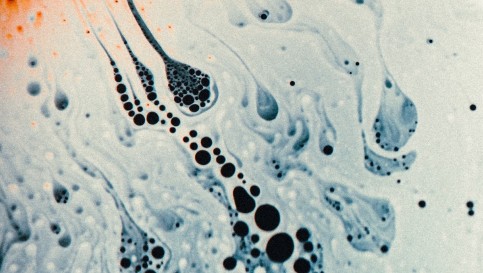Mechanical Engineers investigate how bubbles rupture

An image of the research, provided by Dr Li Shen
A paper on the collapsing of bubbles, co-authored by researchers from the Tribology group, was recently published in Science Advances.
Here is a summary from the paper's first author, Dr Li Shen: "Spots on bubbles have long since been observed.This particular form of pattern formation only occurs when the bubble is nearing rupture in the regions around the apex of the bubble.To understand this pattern formation is to begin to understand how bubbles rupture and how the transport of detergents, i.e. surfactants, aid in the stability of the thin film which is a huge part in understanding many natural and industrial processes, most notably, bubble formation and collapse, or more commonly known, foaming.
In our latest work due reported in the multi-disciplinary journal Science Advances, we set out to look at the patterns which form at the onset of the rupture instability of a thin-film stabilised by a surfactant. Using an asymptotic method, we investigate the spot formations and evolutions in order to understand how they behave and how they potentially create the situations to induce bubble collapse.

By doing so, we see a glimpse of the rich structures and dynamics which occur just before a bubble ruptures and link the onset of the instability to microscopic fluctuations which occur on the surface of a bubble, called the capillary waves. We anticipate these fluctuations hold the key to understanding bubble rupture and ultimately, the foaming process."
Why is this work important? As Dr Shen explains, foaming is a challenging natural and industrial problem: "In the lubricant and tribological context, foaming is a detrimental process which reduces efficiency and increases wear in the engine system."
Article text (excluding photos or graphics) © Imperial College London.
Photos and graphics subject to third party copyright used with permission or © Imperial College London.
Reporter
Press Office
Communications and Public Affairs
- Email: press.office@imperial.ac.uk
